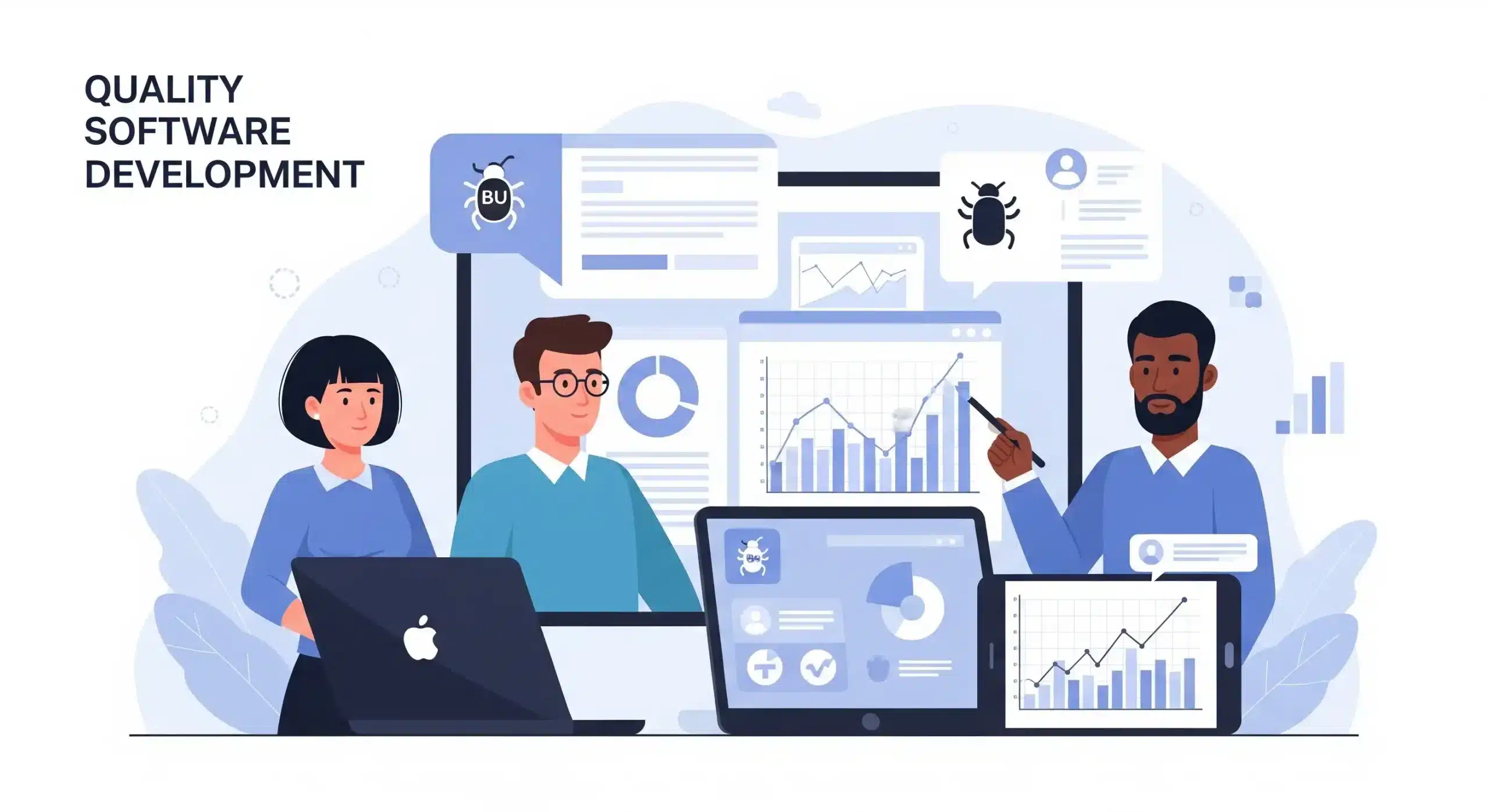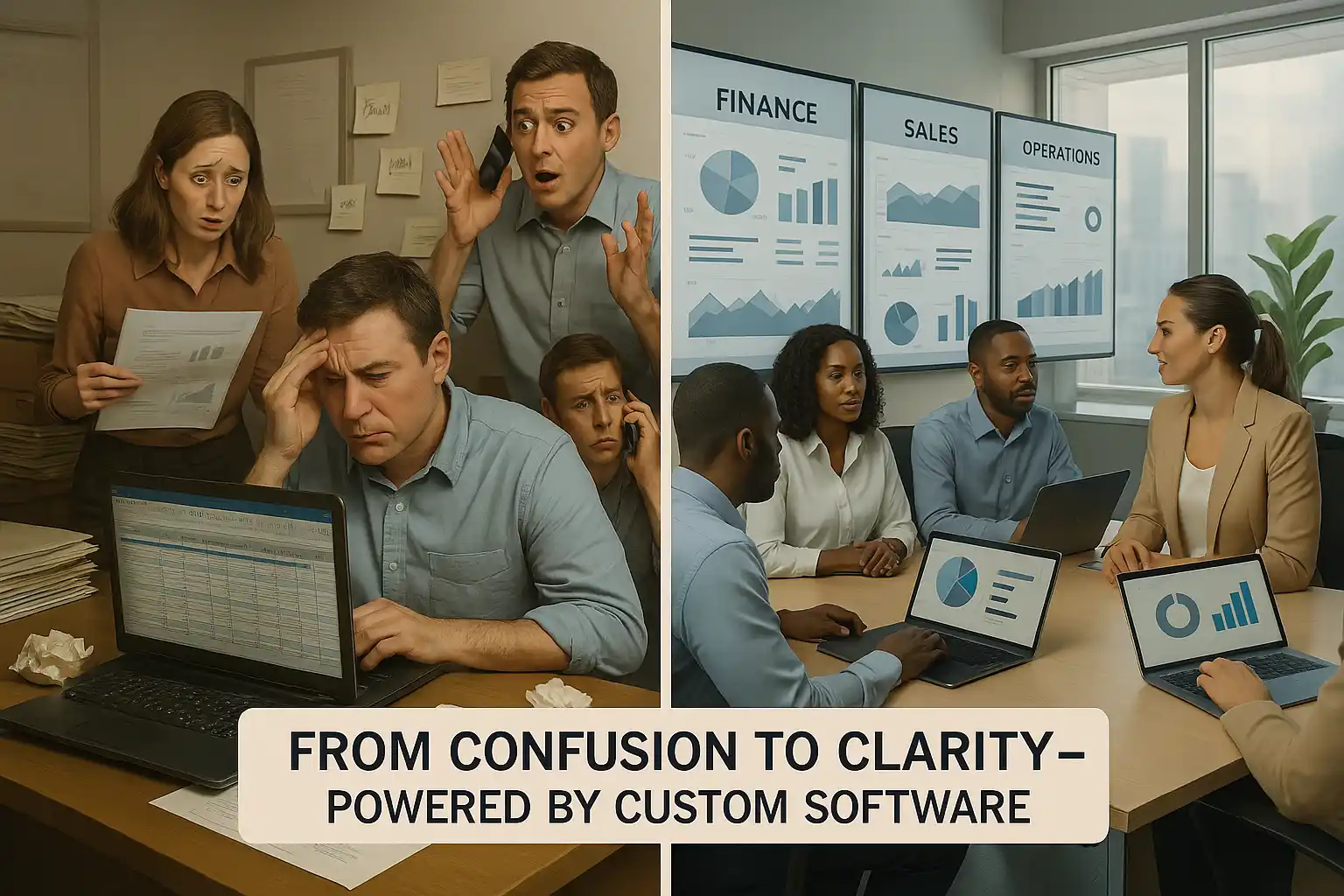Software Development Phases Guide – A Detailed Overview

Whether it be for a desktop or a mobile device, one should be familiar with all the stages of the software development lifecycle (software development phases) before creating any kind of application. It will enhance the application’s quality and development process. To build an application according to the client’s requirements in a cost-effective manner, there are 5 software development phases. Each phase has a distinct process that resembles a cycle. The SDLC life cycle will teach us about:
- How to get the customer’s requirements
- How to evaluate the demands
- Designing, Development, Testing
- Maintenance and deployment of applications.
Software development paradigms come in nine different varieties. They are the Agile/SCRUM model, the Waterfall model, the Spiral model, the Rapid model, the prototype model, and the incremental model. The model we use to construct an application will depend on the needs of the client. Depending on the development model, the software development phases of the lifespan will change.
Here is a detailed look at each stage.
6 Phases of Software Development Life Cycle
1. Analysis and Gathering of Requirements
The features of the system we are going to design, develop, etc., are described in the requirements. In the software development lifecycle, this is one of the most important software development phases. Basic client requirements, such as what the software actually does and who the target market is, are gathered by the business analyst. That will determine whether BA accepts or rejects the project. If the project is successful, BA will concentrate on what needs to be accomplished and how to accomplish it.
Following the collection of the requirements, BA will create the requirements document by including all client requirements. Customers should be given the requirements document and should accept it. The business analyst will provide an overview for the team (team leads, designers, and developers) to complete the end user need after receiving the customer’s permission. Perfect documentation of all criteria is required. As a result, it will be simple for the entire crew to comprehend what the client expects.
2. Design
Based on the FRS, the system architect and team leaders will discuss the software and hardware requirements in this phase (Functional Requirement Specification). 2 types of documents will be created by the system architect – the High-Level document and the Low-Level document.
The High-Level document will give us an overview of the system’s modules, how we will implement each module, the connections between modules, etc. We will design flowcharts, blueprints, the programming language we will use to implement this application, databases, and other things in the Low-Level document.
Custom AI Software Development Solution For Enterprises
3. Development
In this software development phase, only developers will participate, and they will handle the programming. The SDLC’s longest phase is this one. Developers will break down each module into distinct tasks before beginning to code or implement each task. Developers will perform unit testing following the conclusion of the coding portion to identify any early-stage logical issues.
If developers discover any significant issues with the requirements during unit testing, they should notify the requirements team for further action. The system will enter the testing phase once this phase is finished.
4. Testing
All of the modules created in the prior software development phase will be tested by testers as a whole. To certify the application, the QA will employ a variety of test methods. Functional testing, system testing, regression testing, load testing, performance testing, user acceptance testing, etc.
For each module, the QA team will create test cases that include both positive and negative scenarios. When testing, if any bugs are discovered, the development process will resume.
5. Deployment
The software will be sent to the customer after all flaws have been fixed. UAT (User Acceptance Testing) will be done during this phase. In this software development phase, we also need to create a user document. The program will only be made available to a select group of users.
6. Maintenance
The program should be maintained for a few days after it is launched. because operating with mistakes in the user environment is possible. To make the software operate properly, those problems must be resolved. Additionally, customers can add requests for any improvements to the product to meet user needs. Again, we will go through the entire procedure if they make any improvements.
Benefits of Software Development Life Cycle Model
The SDLC model offers many advantages to software development teams, including –
- Lower costs for developing software.
- Enhance the organization’s software offerings’ quality.
- Reduce development time by avoiding post-processing fixes.
- Educate developers on the purpose of what they are building.
- Make sure that early on in the development process, all stakeholders have the chance to offer feedback. Make sure that everyone on the cross-functional team is aware of the expenses and materials required to finish the project.
The software development life cycle model helps to ensure that issues do not worsen during the process because the development team must finish each phase before moving on to the next. Teams can quickly identify and address issues when using this method.
Are you planning to implement SDLC models in your development process and looking for guidance? Let’s connect with our team of experts today!









